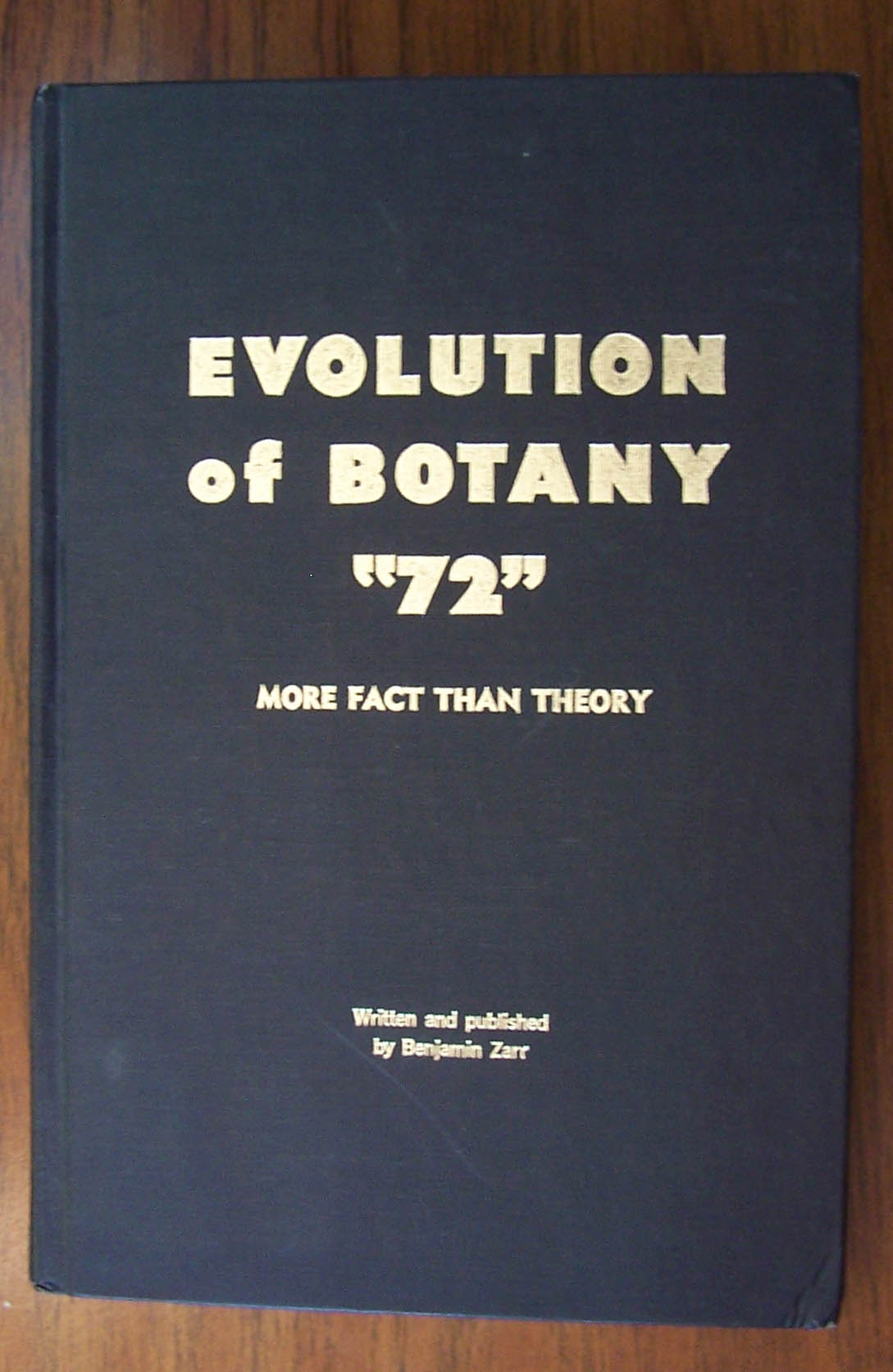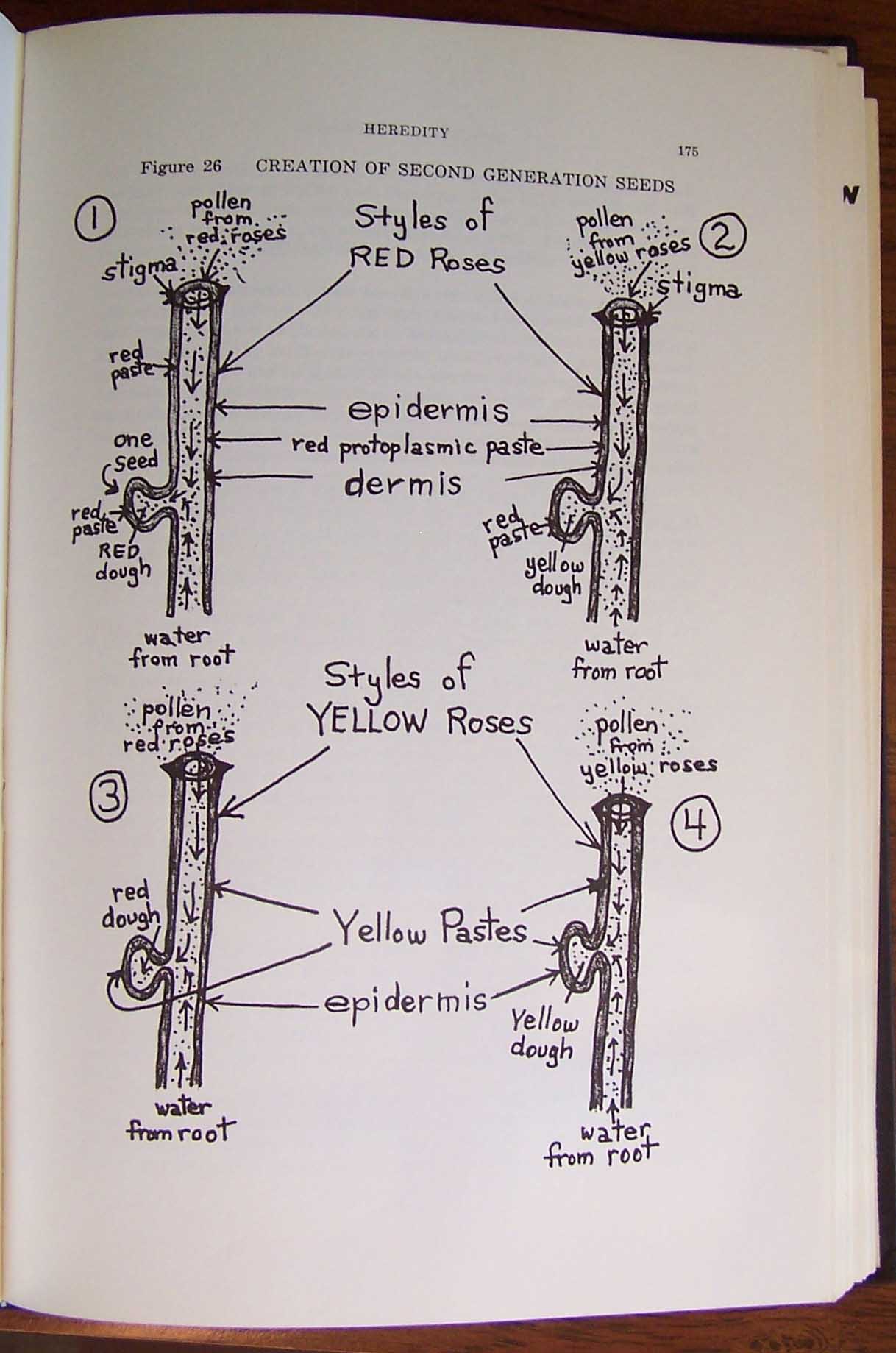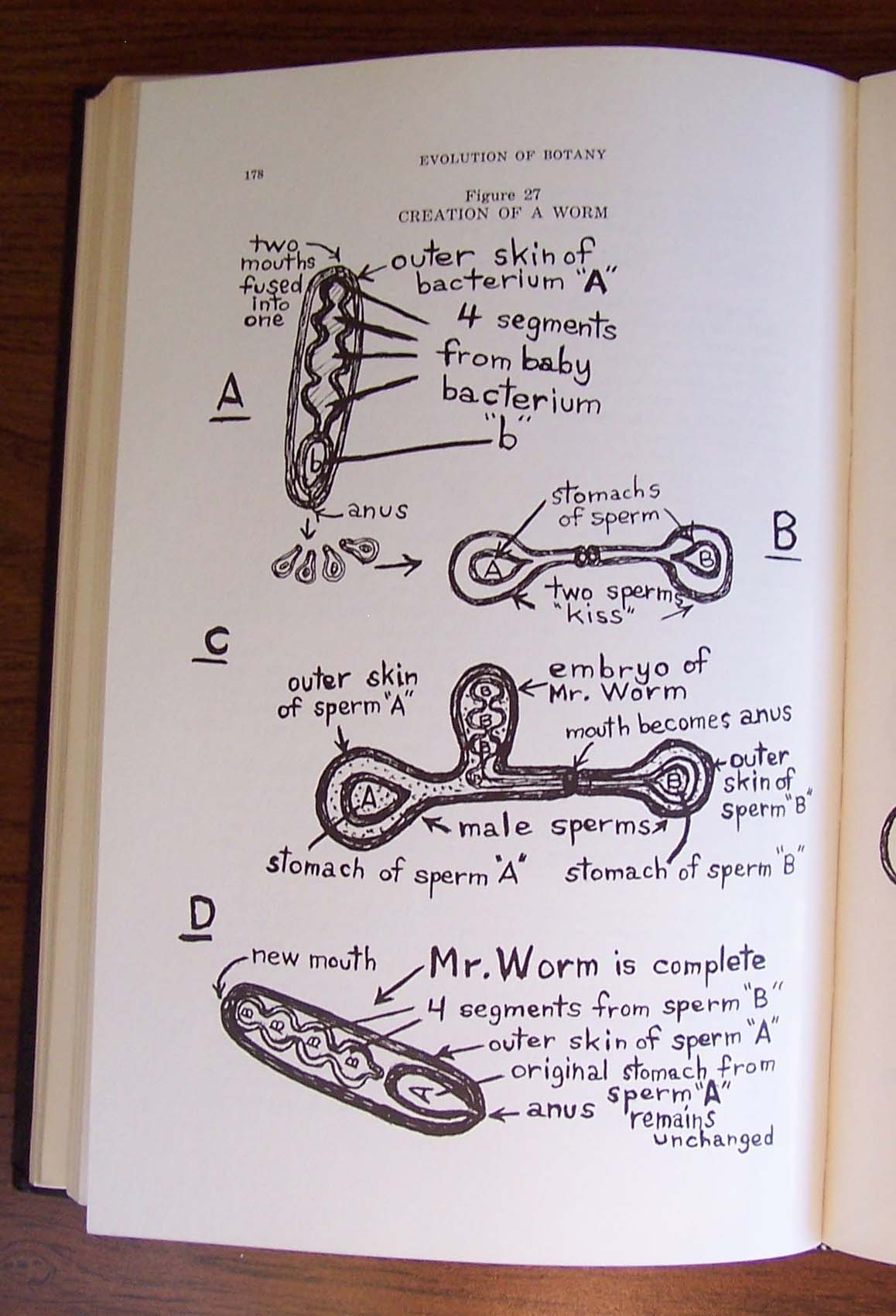Jeff’s post yesterday gave me the perfect opportunity to showcase the star of my bizarre book collection.. It’s called “Evolution of Botany: More Fact Than Theory” written and published by Benjamin Zarr (author of several other books, including “Evolution: No One Can Break Down My Theory!”) Jeff, he’s written more books than you and I put together.

This book was “willed” to me by a dear colleague at Buffalo State College after he retired. When I first received it, I tried to read a chapter, but found it impossible to finish. Here’s an example of one of the numerous illustrations on a chapter about plant heredity:

The discussion around this illustration is too long for this blog. Plus, it hurts my brain. You might notice some interesting botanical terms, like “red paste” and “yellow dough” for instance. Here’s part of the text on these details: “I say red “dough” and red pastes always reproduce the color red because pollen always inherit a specific “melting” point. When the heat of the sun warms the starchy contents of a seed or the pastes of a seed coat red has the lowest melting point therefore it shows up before any other color. Just like in a specturm of light red appears first and purple last, all other colors come in between. When red has been eliminated it fades into pink, then into the color with the next higher melting point until white appears as the hardiest color of all.”
Ack.
Not content to write just about plants (which evolved after animals, but that’s a whole different chapter), he ventures into the evolution of animals:

Words fail me. (But they don’t fail a reviewer for the Quarterly Review of Biology, which you can read here.)
Though this book is an extreme example, it fits in with Jeff’s post yesterday about critical thinking. (If you’re interested in the dissection of yet another book – The Sound of Music and Plants – click here for an online column of mine from 2003.)
That is stunning. I wonder how many of those books were sold?
I have a copy of The Sound of Music and Plants and I enjoy it! Sure, it's not great science, but I think that the author was very honest about the work which she conducted and never pretended to be a scientist. The Secret Life of Plants — now there's a "problem" book! Of course we need to remember that none of these books which seek to explain natural phenomena does what Bader's book does — recommending that gardeners use insane concoctions for various pest.
True…these bizarre books don't cause people to do useless or dangerous things…but on the other hand, consider this quote by Gerald Holton, Harvard science historian: "Persons living in this modern world who do not know the basic facts that determine their very existence, functioning, and surroundings, are living in a dream world. Such persons are, in a very real sense, not sane."
Here's to promoting sanity both in the mind and the garden!
Here Here!
One of these days we'll drink to it!
Linda, that is a SCREAM!!! Was he a contemporary of Timothy Leary, perchance?
Red dough!Embryo of Mr. Worm! Priceless. I must find a copy of this book. You've made my Friday…
Holly, I have no idea where this guy came from. No information in the book as to where it was published. I do think that he delivered it personally to my old colleague in Buffalo, so I'm guessing perhaps an East Coast native?
You can find books on Amazon, though most are unfortunately not available. But I promise to bring my copy along when I travel in your direction, or maybe to the GWA next year?
And here's one more little teaser from the glossary: "Wood – crystallized plantonium."
That books looks like a special find, Linda!
Oh yes, Jimbo, it has given me the incentive to dig through second hand stores and garage sales looking for other such treasures! (I already have a small collection of truly warped children's stories, which were published before everything had to be so PC. My favorite is about a pig named George who blew up after he ate too many doughnuts.)
I just found a hysterically funny 1972 review of two of Zarr's other books (I've embedded the link into the original post). Best line from the review: "It seems a happy coincidence that his name is B. Zarr."
this book seems to be really funny.